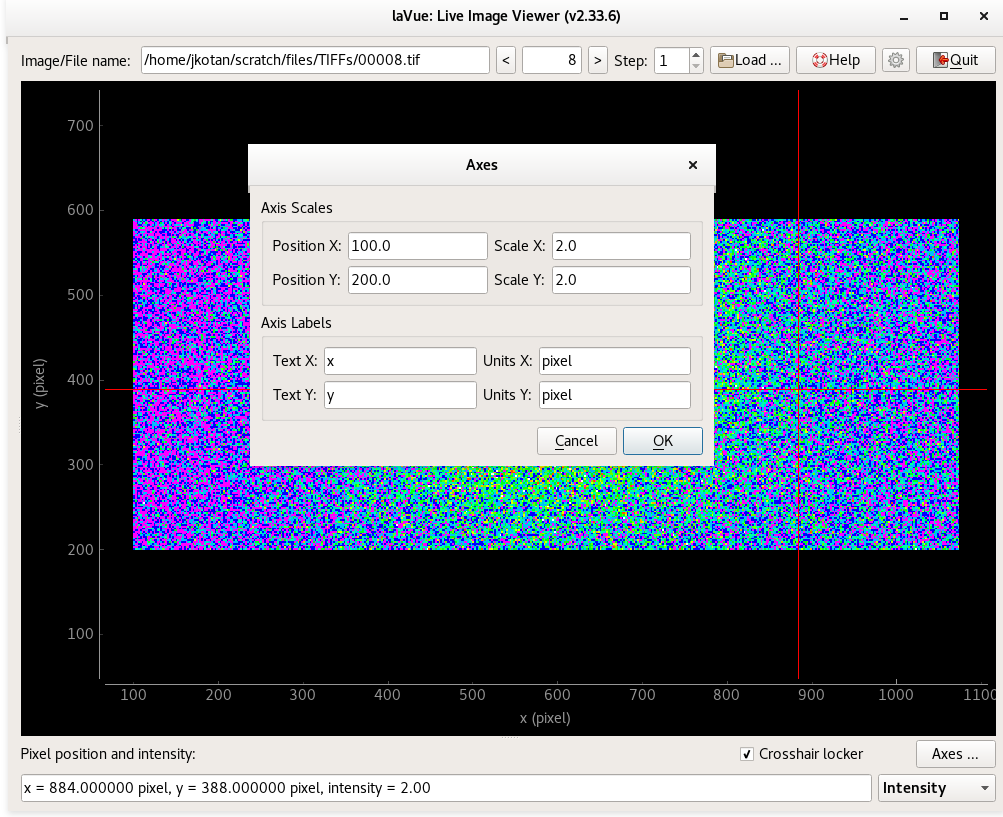ROI Tool¶
ROI Tool selects Regions Of Interest and culculates a sum of their pixel intensities

ROI alias(es) for roi tango devices
Add to or Fetch from sardana environment (see below). If lavue is working with ANALYSISDEVICE , i.e. lavue -n <device>, ROIs bounds are sending also to tango SPECTRUM RoIs attribute of the device, e.g. LambdaOnlineAnalysis server.
Sum of the selected ROI or all ROIs. The used version can be selected in the configuration.
Moreover, in configuration can be set if the sums of calculated ROIs should be sent to LavueController tango server.
After adding ROIs to sardana the following environment variables are created or updated
DetectorROIs: JSON dictionary with all Regions Of Interests ranges, e.g.
{“pilatus_roi1”: [[195, 73, 277, 145]], “pilatus_roi2”:[[305, 65, 455, 125]], “old_pilatus_roi”:[[19, 27, 73, 146]]}DetectorROIsValues: JSON dictionary with Regions Of Interests sums, e.g.
{“pilatus_roi1”: [44940.0], “pilatus_roi2”: [8167.0]}}DetectorROIsParams: JSON list of image transformations performed by lavue, e.g.
[“transpose”, “flip-left-right”, “flip-up-down”]DetectorROIsOrder: JSON list of ROI aliases representing they order, e.g.
[“pilatus_roi1”, “pilatus_roi2”]
The configuration of the tool can be set with a JSON dictionary passed in the --tool-configuration option in command line or a toolconfig variable of LavueController.LavueState with the following keys:
aliases (list of strings), rois_number (integer)
e.g.
lavue -u roi --tool-configuration \{\"rois_number\":2,\"aliases\":[\"pilatus_roi1\",\"polatus_roi2\"]}